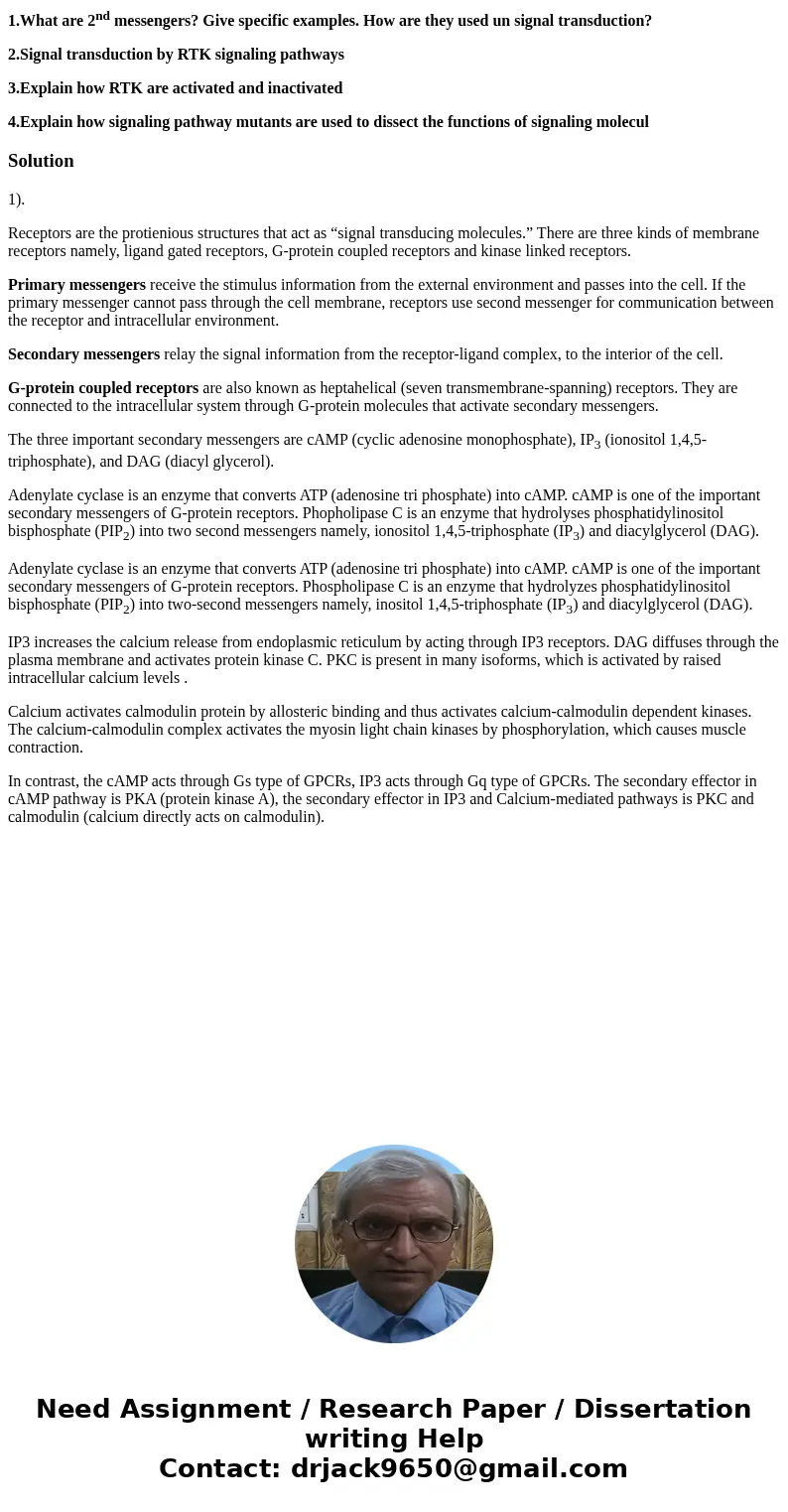1What are 2nd messengers Give specific examples How are they
1.What are 2nd messengers? Give specific examples. How are they used un signal transduction?
2.Signal transduction by RTK signaling pathways
3.Explain how RTK are activated and inactivated
4.Explain how signaling pathway mutants are used to dissect the functions of signaling molecul
Solution
1).
Receptors are the protienious structures that act as “signal transducing molecules.” There are three kinds of membrane receptors namely, ligand gated receptors, G-protein coupled receptors and kinase linked receptors.
Primary messengers receive the stimulus information from the external environment and passes into the cell. If the primary messenger cannot pass through the cell membrane, receptors use second messenger for communication between the receptor and intracellular environment.
Secondary messengers relay the signal information from the receptor-ligand complex, to the interior of the cell.
G-protein coupled receptors are also known as heptahelical (seven transmembrane-spanning) receptors. They are connected to the intracellular system through G-protein molecules that activate secondary messengers.
The three important secondary messengers are cAMP (cyclic adenosine monophosphate), IP3 (ionositol 1,4,5-triphosphate), and DAG (diacyl glycerol).
Adenylate cyclase is an enzyme that converts ATP (adenosine tri phosphate) into cAMP. cAMP is one of the important secondary messengers of G-protein receptors. Phopholipase C is an enzyme that hydrolyses phosphatidylinositol bisphosphate (PIP2) into two second messengers namely, ionositol 1,4,5-triphosphate (IP3) and diacylglycerol (DAG).
Adenylate cyclase is an enzyme that converts ATP (adenosine tri phosphate) into cAMP. cAMP is one of the important secondary messengers of G-protein receptors. Phospholipase C is an enzyme that hydrolyzes phosphatidylinositol bisphosphate (PIP2) into two-second messengers namely, inositol 1,4,5-triphosphate (IP3) and diacylglycerol (DAG).
IP3 increases the calcium release from endoplasmic reticulum by acting through IP3 receptors. DAG diffuses through the plasma membrane and activates protein kinase C. PKC is present in many isoforms, which is activated by raised intracellular calcium levels .
Calcium activates calmodulin protein by allosteric binding and thus activates calcium-calmodulin dependent kinases. The calcium-calmodulin complex activates the myosin light chain kinases by phosphorylation, which causes muscle contraction.
In contrast, the cAMP acts through Gs type of GPCRs, IP3 acts through Gq type of GPCRs. The secondary effector in cAMP pathway is PKA (protein kinase A), the secondary effector in IP3 and Calcium-mediated pathways is PKC and calmodulin (calcium directly acts on calmodulin).

 Homework Sourse
Homework Sourse